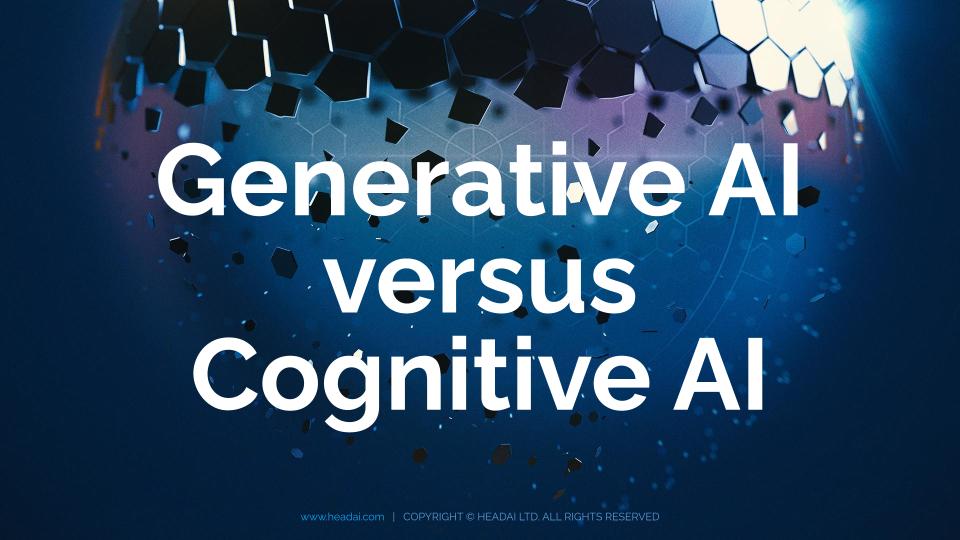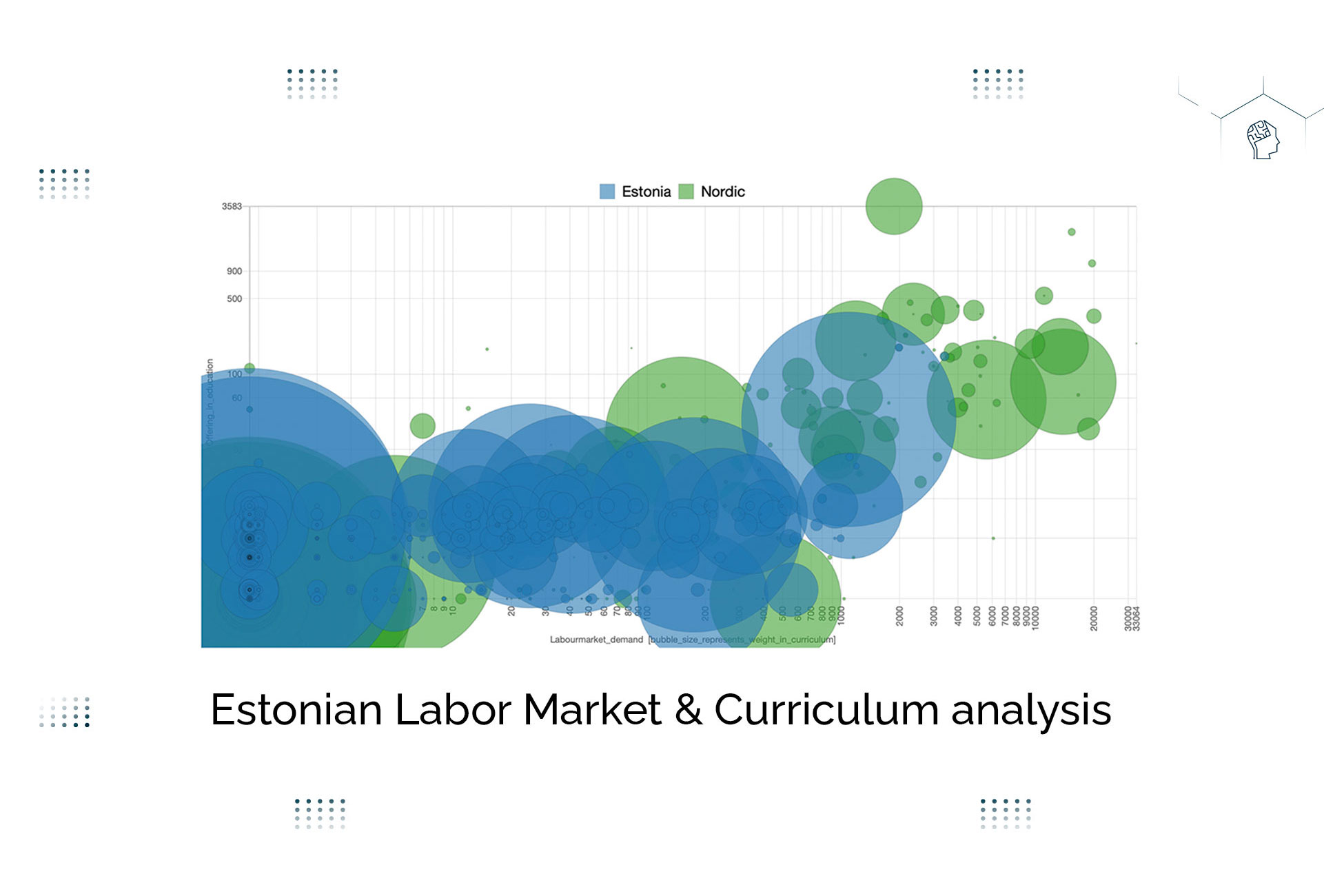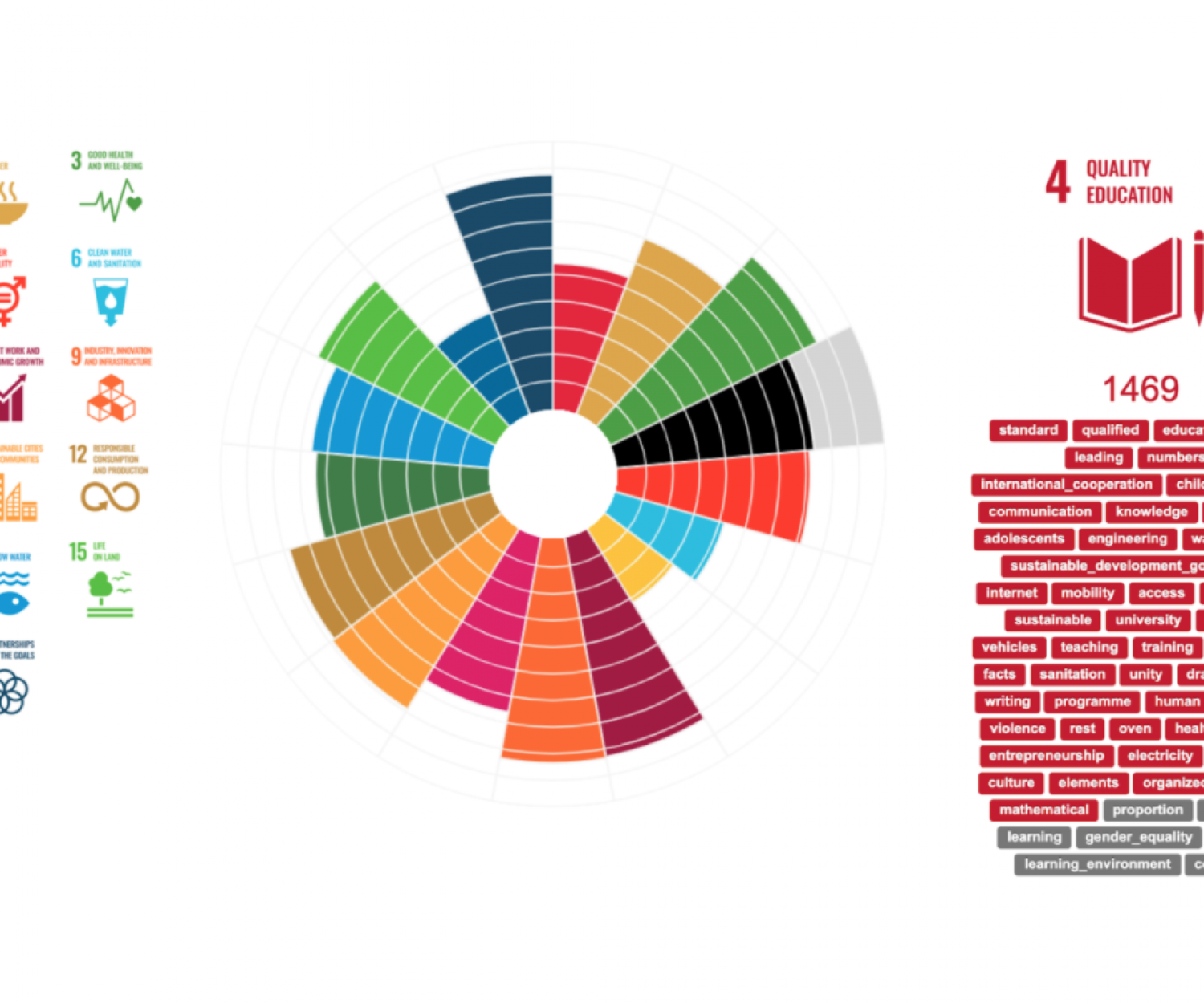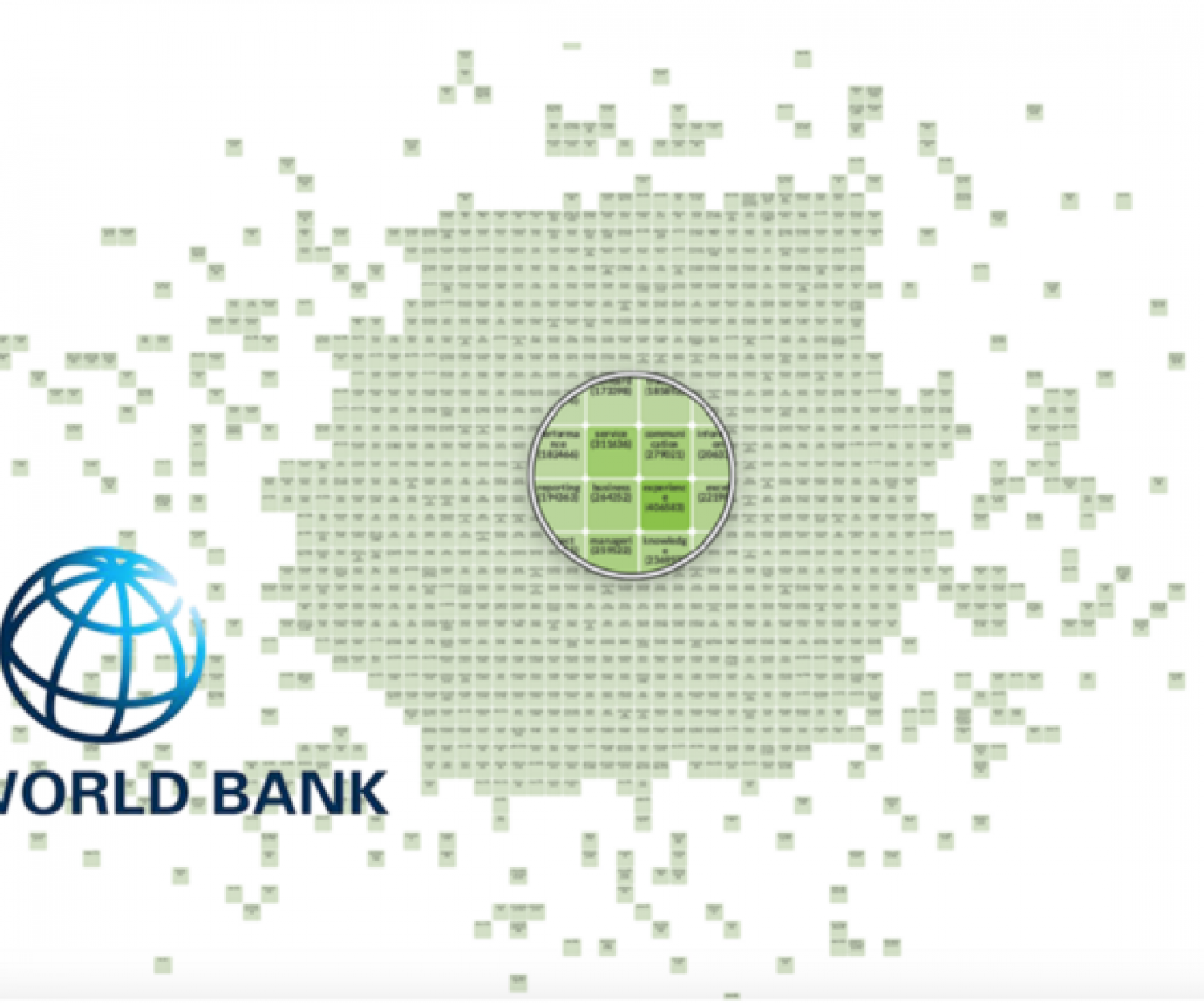Among the diverse branches of AI, two prominent approaches have garnered significant attention: generative AI and cognitive AI. In this article, we will delve into the key differences between these two AI variants and explore further the possibilities that Headai’s cognitive AI can offer.
Artificial intelligence (AI) has emerged in recent years as a transformative force, permeating various aspects of our everyday lives. AI has become increasingly accessible and integral to our digital interactions in everyday life, from voice assistants like Siri and Alexa to recommendation systems on streaming platforms like Netflix. Generative AI, the branch of AI to which eg. Chat GPT belongs, focuses on the creation of new content by leveraging patterns and examples learned from existing data.
By understanding the underlying structures and characteristics of the existing data, generative AI models can generate text, images, music, and more that closely resemble the training data. This ability has opened up exciting possibilities for artistic expression, content generation, and even storytelling. “Generative AI models achieve impressive results by predicting the next word or pixel. However, they cannot solve all problems, which is why we need other approaches as well. Cognitive systems have proven to be effective in several areas, including predictive analytics”, explains Harri Ketamo, the Chairman of Headai.
Alongside generative AI, cognitive AI has emerged as a formidable approach, revolutionizing industries and redefining human-machine interactions. Cognitive AI systems aim to simulate human thought processes, encompassing functions such as understanding language, reasoning, learning, and decision-making. By definition, the word “Cognitive” refers to the imitation of human behaviour in dealing with cognitively complex matters. By emulating human-like intelligence, cognitive AI enables machines to interact with the world in a manner that resembles human cognition. Cognitive AI systems are designed to understand, reason, learn, and interact with their environment. They often leverage techniques such as natural language processing, machine learning, and data analytics to process information, make decisions, and take action. Cognitive AI finds applications in healthcare, finance, and education, where it can analyze data, make predictions, and provide insights to support decision-making.
Empowering economic growth
In a world where skill gaps persist and the demand for adaptable professionals continues to grow, cognitive AI emerges as a powerful ally in addressing these challenges. We at Headai pride ourselves on our award-winning Cognitive AI that results from over 20 years of experience in cognitive sciences, making it a trusted and reliable tool in the industry. Headai’s Cognitive AI Graphmind helps predict future skill needs and futureproof the skills ecosystem for nations, organizations, and individuals.
Aiming to enable organisations to process large volumes of textual data, gain valuable insights and make better-informed decisions, the Graphmind aids organizations in maximizing their data asset value and automating qualitative analysis and supports nations in securing continuous and sustainable growth.
But to o unlock the full potential of skills data and its use cases, needs it to be made interoperable, allowing it to be simulated and integrated with other data sets. This enables the creation of visualisations for future skills development, the mapping of human capital, and data-driven development that ensures actions are future-proof.
So, how does Headai’s Graphmind work? Our goal was to build a machine that reads and processes text in a way that mirrors human cognition. This requires a combination of cognitive psychology, semantic computing, and machine learning. The unique approach is based on the cognitive psychology of learning, where thinking is grounded in conceptual representations of observations, experiences, and the relationships between concepts.
We employ Self-Organizing Maps (SOM) -a type of unsupervised learning, which keeps our model up-to-date and adaptable to changing conditions, and therefore our Cognitive AI’s interoperable machine learning data model can represent various entities’ skill assets, such as:
- skills supply and demand
- skills forecasts
- individual professional profiles
- educational curricula
- the UN’s Sustainable Development Goals (SDGs)
Headai’s Graphmind is an incomparable tool for, for example, various strategy work projects, used e.g. in strategy work by states, cities, development companies and any entities that need to process large masses of text. It allows for cognitive complex tasks, including reasoning with controversial or incomplete information, surpassing the limitations of traditional Deep Learning models.
To train our model, we have leveraged various sources such as global labour market standards, business information systems, news and media, job ads, patents, and research. The training process consists of two phases. In the first phase, our AI learns the basic semantics and relations within the working context using unsupervised learning techniques. In the second phase, reinforcement learning comes into play, where users evaluate and teach the AI by assessing its performance.
This approach enables the AI to handle diverse tasks and adapt to different requirements. The mind maps created by our algorithms serve as fundamental elements in building AI solutions. They help the AI understand the connections, overlaps, and gaps within textual data, fostering a deep comprehension of words, meanings, and context.
With Headai’s Cognitive AI Graphmind, performance can be measured against internal KPIs or external indicators, compare your human capital map to your strategic goals or SDGs, and receive recommendations on development paths.
The predictive analysis capabilities of the Graphmind allow you to gain insights from labour markets, governmental policies, professional trends, and academic research based on big data. This empowers you to prepare for future needs in human capital and stay ahead of the curve.
Headai’s Graphmind offers several benefits compared to Deep Learning applications. Firstly, it is environmentally friendly, consuming only a fraction of the energy required by Deep Learning solutions. Additionally, it enables complex cognitive reasoning tasks, allowing for the handling of controversial or incomplete information.
We pride ourselves on AI solutions that are easily explainable, avoiding the “black box” phenomenon often associated with Deep Learning. Lastly, Graphmind is ready to operate even with insufficient data and changing conditions, making it more resilient and adaptable compared to Deep Learning applications.
By leveraging Headai’s Cognitive AI solution Graphmind, organizations can harness the power of data, gain valuable insights, and make informed decisions to drive economic growth. With our technology, you can unlock the full potential of your skills data, bridge skill gaps, and futureproof your workforce. Let Headai’s Graphmind be your ally in navigating the challenges of the modern economy and seizing new opportunities for success.
About Headai
Headai is a Finnish technology company developing a cognitive AI engine powering economic growth. We help organizations succeed in a rapidly changing future by helping them find answers in large amounts of data that they can’t otherwise see.
Our algorithms enable seeing the big picture in scattered data by revealing unknown connections and even explaining why they exist.
Our technology is 100% Headai IP, based on over 20 years of experience in the cognitive and computational sciences.





